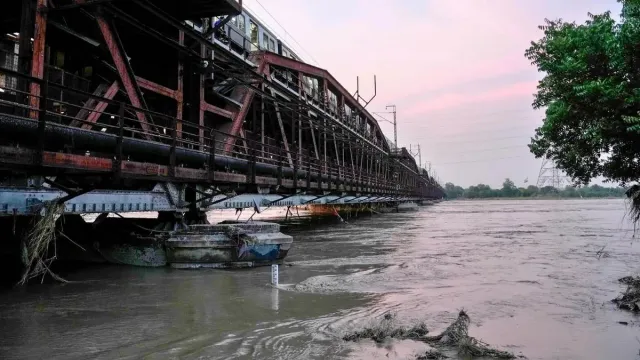- By Nidhi Giri
- Fri, 31 Oct 2025 12:46 PM (IST)
- Source:JND
Yamuna Cleaning: The Centre for Science and Environment (CSE) has stated that cleaning the Yamuna River is achievable, but it demands a fresh plan and a new approach. The organisation noted that current efforts have not produced satisfactory results. According to CSE, successful rejuvenation of the river will require effective planning, efficient implementation, and active public participation.
The assessment, "Yamuna: A River Cleanup Agenda," released by CSE, reveals that more than Rs 6,856 crore has been spent on cleaning the Yamuna between 2017 and 2022, but the situation has not improved significantly. According to this assessment, cleaning the Yamuna River requires significant changes in planning rather than just money.
It has been reported that 84 per cent of the Yamuna's pollution in Delhi comes from the Najafgarh and Shahdara drains alone, and the interceptor drain scheme is not working for them.
The assessment revealed that Delhi has 37 sewage treatment plants (STPs) that can treat more than 80 per cent of the sewage generated, but pollution still persists. Sewage tankers have also been identified as a major cause of pollution as they often discharge wastewater into the drains.
“The problem of Yamuna pollution is not new. A lot of money has been spent on it over the years. We must understand that cleaning the Yamuna will require more than just money, but a focused approach. It will require a well-defined plan that will guide us to think and act differently,” said Sunita Narain, Director General, CSE.
Suggestions Given By CSE
-CSE suggests that GPS should be installed on all sewage tankers so that the dirty water can be transported directly to the STP.
-The report recommends a five-point action plan that includes preventing mixing of treated and untreated water and ensuring full utilisation of treated water.
ALSO READ: Chennai Power Cut Tomorrow: Shutdown Announced By TANGEDCO On Saturday; Check List Of Affected Areas
-The plan for the main drains, Najafgarh and Shahdara drains, which pollute the Yamuna the most, needs to be redrawn.
-There is a lack of effective implementation of schemes. Many schemes have been launched over the years, but they have not been fully implemented, making pollution a serious problem.
-There is a need to promote active participation of citizens in cleaning the river, for which extensive public awareness campaigns will have to be run.

